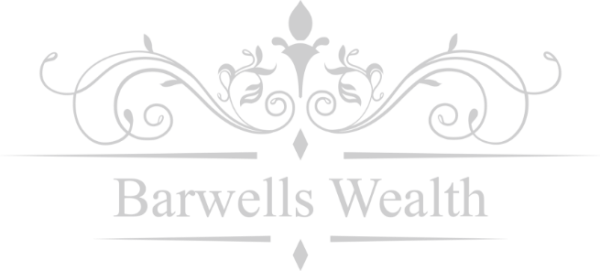The month in summary
Global shares advanced in July. In contrast to much of the year so far, emerging markets outperformed developed market equities. Smaller companies also performed well. Gains were supported by lower inflation in several developed markets, including the US. Corporate bonds outperformed governments bonds in the month.
Please note any past performance mentioned is not a guide to future performance and may not be repeated. The sectors, securities, regions and countries shown are for illustrative purposes only and are not to be considered a recommendation to buy or sell.
US
US equities advanced in July, with economic data indicating resilient growth and inflation starting to fall. The Federal Reserve (Fed) enacted a rate hike of a quarter percentage point in July. The central bank offered no firm position on whether rates would rise further in September, although expectations are that this will be the final hike of this cycle.
Hopes have also risen that the central bank may have orchestrated a “soft landing” by cooling growth and taming inflation without triggering a recession.
Inflation, as measured by the Consumer Prices index (CPI), rose 0.2% (month-on-month) in June, following a 0.1% increase in May. The increase was below market forecasts and lowered the annual rate to 3.0%. The US economy expanded at an annualised 2.4% (quarter-on-quarter) in Q2, above economists’ forecasts of a 1.8% expansion.
Energy stocks advanced on expectations of tighter supply and the positive growth data. Certain media and technology giants made strong gains, as did a number of banking stocks. Healthcare and consumer staples lagged behind, although no sector posted negative returns overall.
Eurozone
Eurozone shares made gains in July, supported by a fall in inflation and positive economic growth data. Top gaining sectors included real estate, energy and materials. Laggards were consumer staples, information technology and utilities.
The European Central Bank (ECB) raised interest rates by 25 basis points in July. However, investors began to anticipate that the ECB might be close to the end of its rate-hiking cycle as inflationary pressures are falling. Euro area annual inflation for July was estimated at 5.3%, down from 5.5% in June.
Economic growth data showed that eurozone Gross Domestic Product (GDP) grew by 0.3% quarter-on-quarter in Q2. Forward-looking data published in July pointed to a cooling economy. The flash eurozone Purchasing Managers’ Index (PMI) for July fell to an eight-month low of 48.9, with manufacturing activity being particularly weak. For reference, in the PMI surveys, a reading below 50 implies contraction, a reading above 50 implies expansion.
The Q2 earnings season began during the month. So far, earnings have generally proved resilient. Some food and beverage companies highlighted weaker volumes as consumers shy away from higher prices. Bank earnings continued to show the benefit of higher interest rates.
UK
UK equities rose over the month, led by a number of domestically focused areas as investors began to unwind their expectations of continued aggressive rate hikes by the Bank of England (BoE). This shift in expectations occurred after the Office for National Statistics revealed headline inflation easing sharply in June to 7.9%, while core inflation also fell to 6.9%.
As a result UK gilts rallied (yields fell) over the period. Gilt yields are important for the UK domestic economy as they influence “swap rates”, which lenders use when pricing fixed-rate mortgages. As fears around the UK inflation outlook eased, these rates retreated from the very elevated levels hit in June. This caused a number of domestically focused areas of the market to bounce back, including housebuilders and the real estate sector. Despite easing inflation fears, the UK economic outlook remained mixed with a number of gauges of activity pointing towards stagnation.
Aside from the rebound in domestic sectors, internationally focused areas of the market including the basic materials and energy sectors recovered in line with commodity prices. Meanwhile, industrials also performed well in line with an improving outlook for the global economy. Most sectors rose over the month, with the exception of utilities and healthcare.
Japan
The Japanese equity market continued to rise modestly in July with the TOPIX Total Return index up by 1.5% in local terms. The market was driven by mid and small cap stocks, which had lagged during the June rally, and that trend resulted in a weaker return from the Nikkei 225, which was slightly down by -0.1%.
The market started the month with the Nikkei hitting another 33-year high, but it then fell due to some pressure from profit-taking. The market then moved sideways and waited for quarterly earnings results and the Bank of Japan (BOJ) policy meeting scheduled later in the month.
The US stock market was strong amid investor expectations that the Fed is less likely to tighten monetary policy further toward the year end. The Japanese market was also supported by the improvement in market sentiment in the US.
Quarterly earnings results were solid in Japan. However, there were market concerns about potential BOJ policy moves. If BOJ policy was tightened, then the stock market could be negatively affected. Eventually, BOJ Governor Ueda took moderate action by tweaking the current so-called yield curve control policy and its impact on the equity market was limited.
We continued to see improvement in the macroeconomic figures in Japan, including the BOJ tankan survey and consumption, wage growth, and resilient CPI data. These supported the positive view on Japan’s macroeconomy. Quarterly earnings results also confirmed this positive macro backdrop.
Asia (ex Japan)
Asia ex Japan equities recorded a positive performance in July, with all index markets ending the month in positive territory. The Chinese government announced its determination to shore up China’s flagging economy with new initiatives to boost consumption.
China, Malaysia, and Singapore were the best-performing markets, while gains achieved in Taiwan, Indonesia, and the Philippines were more muted in the month. Share prices in China were sharply higher in the month after Beijing promised some measures to boost sluggish economic growth by supporting real estate sales and other struggling sectors.
Singapore stocks also achieved robust growth in July, driven by strong tourism data and a positive performance by banks, amid resilient margins and market expectations of higher dividend payments. In Taiwan, foreign investors put aside concerns over geopolitical tensions to buy into soaring artificial intelligence (AI) and chipmaking stocks. South Korea also achieved solid gains in July, driven by the ongoing enthusiasm for AI-related stocks.
Emerging markets
Emerging market (EM) equities rallied in July, outperforming developed market equities as Chinese authorities indicated economic support for the real estate sector and consumption. They also pledged to alleviate local government debt burdens. Stronger commodity prices were beneficial for some EM too.
Turkey was the best-performing index market, reversing June’s significant underperformance. Colombia benefited from stronger energy prices while broader commodity price strength was also supportive for the South African market, as was growing optimism that the worst-case scenario of winter blackouts will be avoided. Peru was also up in US dollar terms, boosted by stronger copper prices.
China outperformed as economic data held up relatively well and as investors welcomed news of economic stimulus, even if it is somewhat limited. Visits from several politically influential US individuals appeared to ease geopolitical tension. Poland, Thailand, and Czech Republic were ahead of the index, while Korea was in line.
Chile was up, although behind the benchmark, as the central bank announced a bigger-than-expected cut in interest rates at month end.
Greece and UAE were also positive but behind the index, with sentiment in the former still supported by the New Democracy Party’s recent general election win. The latter was buoyed by stronger energy prices. Brazil and Mexico lagged the index. While local currency strength was supportive in both markets, economic activity indicators were weaker in Brazil and mixed in Mexico.
India underperformed as persistent food price rises kept headline inflation elevated. Taiwan was behind the index as continued strength in AI-themed stocks was offset by weakness elsewhere. Egypt was the worst-performing index and the only EM to post a negative return.
Global bonds
In July 2023, riskier assets continued their strong performance while government bonds underperformed. The lower-than-expected inflation figures from the US raised optimism that the US economy could avoid a more serious downturn. The narrative of a soft landing is gaining traction. Both the Fed and the ECB raised rates by 0.25% in line with expectations, but pledged data dependency in terms of forward guidance.
Global government bond markets delivered negative returns overall in July, although yields at the shorter end of the curve (such as securities that will mature sooner) trended lower due to clearer signs that central banks may be slowing down interest rate hikes.
The US 10-year yield continued on an upwards trend and increased from 3.63% to 3.81%, then to 3.95%, with the two-year remaining at 4.87%. Germany’s 10-year Bund yield continued to rise from 2.40% to 2.47%, while the two-year dropped back from 3.27% to 3.21%. French, Italian and Spanish 10-year bond yields all increased while the two-year yields decreased.
In the UK, the BoE’s Monetary Policy Committee did not meet during July, but investors scaled back some of their more extreme rate expectations as better news on inflation emerged. This resulted in the outperformance of gilts over other major government bond markets during the month. The UK two-year yield dropped from 5.26% to 4.98%. The UK 10-year yield also decreased from 4.39% to 4.31%.
The BoJ introduced some market volatility by adjusting its yield curve control policy. While keeping the original target range, it effectively widened the reference band by introducing a 1% cap on the 10-year Japanese government bond yield, leading to Japanese government bonds selling off in response.
Softer inflation and broadly resilient US growth have been supportive of credit markets. US and European investment grade and high yield bond markets generated positive returns and outperformed government bonds over the month. Investment grade bonds are the highest quality bonds as determined by a credit rating agency; high-yield bonds are more speculative, with a credit rating below investment grade.
In currencies, the US dollar was weaker against its G10 peers. Despite the positive news on US growth, an associated boost to risk sentiment generally benefited higher yielding and commodity-related currencies.
The Refinitiv Global Focus convertible bond index advanced 2.7% in US dollar terms, representing a solid upside participation with the equity market gains in July. In line with summer seasonality, the primary market for convertibles saw a low volume of $3.4 billion of new paper. Convertible bond valuations continue to reflect a low level of investor interest in the asset class. Asia remains the cheapest region for convertibles.
Commodities
The S&P GSCI Index recorded a positive performance in July. Energy was the best-performing component of the index, with sharply higher prices for gas oil, heating oil and unleaded gasoline offsetting a small decline in the price of natural gas.
Within industrial metals, all sub-components achieved robust price gains, with nickel and zinc achieving the strongest advance in the month. In agriculture, there were strong price gains for sugar, cocoa, coffee and cotton. Wheat prices also climbed after Russia withdrew from a UN deal allowing the export of Ukrainian grain via the Black Sea. In precious metals, the price of silver was sharply higher, while the increase in the price of gold was more muted.
Please note
The value of your investments (and any income from them) can go down as well as up and you may not get back the full amount you invested. Past performance is not a reliable indicator of future performance. Investments should be considered over the longer term and should fit in with your overall attitude to risk and financial circumstances.
This blog is for general information only and does not constitute advice. The information is aimed at retail clients only.







 Production
Production